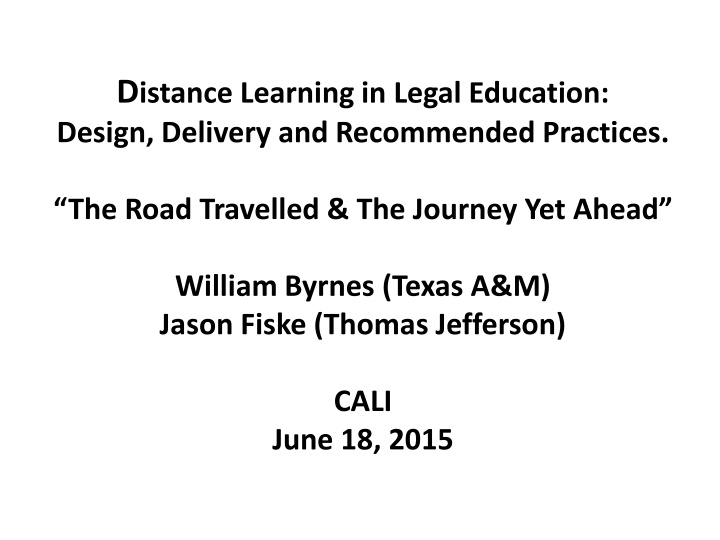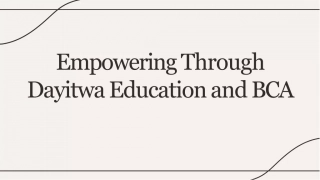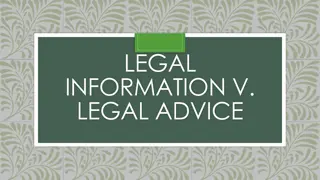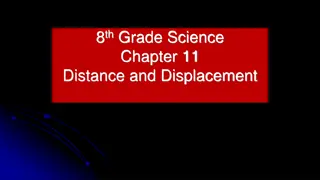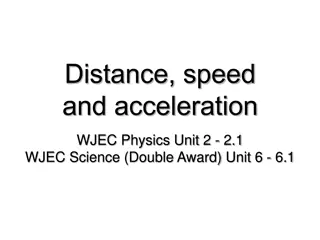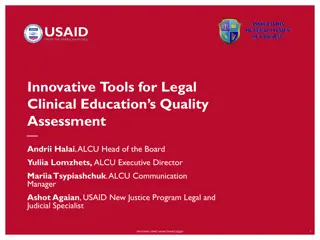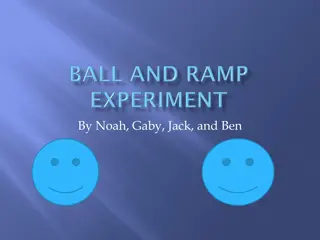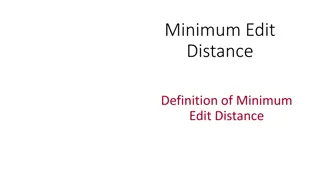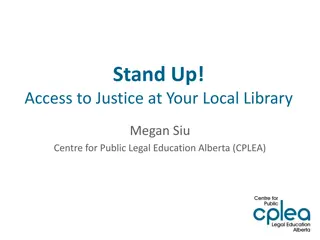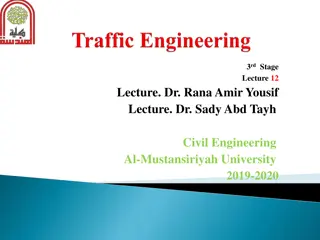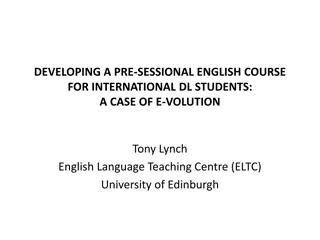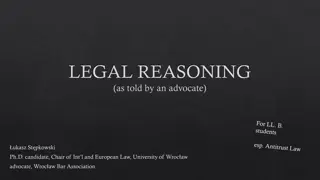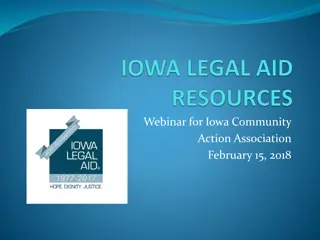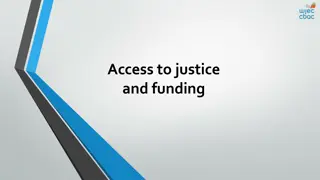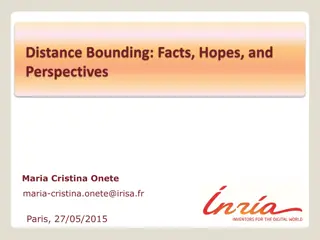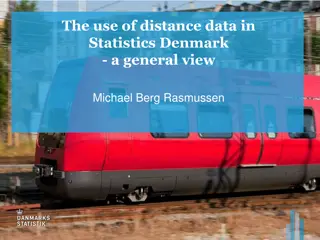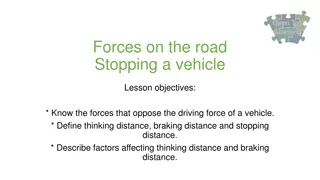Distance Learning in Legal Education: Design, Delivery, and Recommended Practices
This content discusses the challenges, solutions, and best practices in legal distance learning, covering topics such as educational theory, program administration, technology training, intellectual property, and business models. It explores delivery mechanisms, instructional tools, assessment methods, student orientation, professional online conduct, accreditation, and more.
Download Presentation

Please find below an Image/Link to download the presentation.
The content on the website is provided AS IS for your information and personal use only. It may not be sold, licensed, or shared on other websites without obtaining consent from the author.If you encounter any issues during the download, it is possible that the publisher has removed the file from their server.
You are allowed to download the files provided on this website for personal or commercial use, subject to the condition that they are used lawfully. All files are the property of their respective owners.
The content on the website is provided AS IS for your information and personal use only. It may not be sold, licensed, or shared on other websites without obtaining consent from the author.
E N D
Presentation Transcript
Distance Learning in Legal Education: Design, Delivery and Recommended Practices. The Road Travelled & The Journey Yet Ahead William Byrnes (Texas A&M) Jason Fiske (Thomas Jefferson) CALI June 18, 2015
Who is doing it? 48 online LL.M.s by 30 ABA law schools ABA Standard 306 relaxation ABA definition of DE Hybrid JD of William Mitchell Hamline
Structure 1. Introduction 2. Delivery Mechanisms 3. Instructional Technology Tools 4. Assessment of Students, Courses and Programs 5. Student Orientation, Student Services, and Computer Access 6. Training and Technical Support 7. Institutional Integration and Administration 8. Intellectual Property Law as Applied in Distance Education 9. Professionalism Online 10. Accreditation and Regulation 11. Business and Financial Models
Chapter 1 Collecting Challenges, Solutions, and Best Practices for Deans, Faculty and Policymakers 3 Goals To define and summarize current topics and practices in legal distance learning; To identify areas that need best practices developed, and, to the extent possible, describe current recommended practices; and To identify areas that need further attention, research or development by the legal distance learning community.
Chapter 1 Collecting Challenges, Solutions, and Best Practices for Deans, Faculty and Policymakers 5 distinct domains of challenge i) educational theory & tech resources ii) admin of distance learning programs iii) tech training & management iv) IP v) business & financial models
Chapter 2: Delivery Mechanism Delivery Models: Synchronous & Asynchronous. Strengths & operational considerations Comparative Pedagogy: How do pedagogical practices differ between distance learning and residential programs? How do synchronous and asynchronous pedagogy differ and complement one another?
Chapter 2: Delivery Mechanism Hybrid or Blended Learning. How can distance learning and in-person teaching techniques or tools be deployed in concert to produce better student outcomes? Staffing for Distance Learning Program Design. How do the design and delivery of online courses differ from residential course development and teaching? What particular personnel and skill sets are required to launch and maintain an online program?
Chapter 3: Instructional Technology Tools One common trap new online instructors and program designers discover is the temptation and excitement of new online tools. While the number of technological tools proliferate, and increasingly novel approaches are introduced, instructors can be enticed to use technology for technology s sake. Focus should always remain on using the best tool to achieve designated learning outcomes.
Chapter 3: Instructional Technology Tools 1. Learning Management Systems 2. Webcasts and Video Feeds 3. Podcasts and Voice-Over-Slides 4. Chats and Blogs 5. Quizzes 6. Discussions 7. Wikkis
Chapter 3: Instructional Technology Tools Webcasts Site-to-site Closed Broadcast Open Broadcast Visual Two-way vs. Visual One-way Audio Two-way vs. Visual One-way
Chapter 4: Assessment of Students, Courses & Programs 1. Assessment of Student Performance. 2. Assessment of Course Effectiveness. 3. Assessment of Program Outcomes.
Chapter 4: Assessment & Feedback 1. Rubrics 2. Feedback 3. Peer Grading 4. Attendance as Assessment 5. Gradebook/Dashboard 6. Online Quizzes
Chapter 5: Student Orientation, Student Services & Computer Access 1. Orientation? 2. Student services? (Advising, Career Services, and Student Services Generally) 1. System requirements generally? 2. System requirements across multiple devices?
Chapter 6: Training & Technical Support 1. Faculty Training? 2. Student Training? 3. Support Staff Training? 4. Technical Staff Training?
Are Experts Born or Made? Neuro Science Learning Psychology & Online Pedagogy
Why is this discussion interesting? May expand the universe of pedagogical techniques for the legal educator s toolkit Exposure to other teaching methods and technologies Understand overlap of neuro-science, learning psychology & cognition Examples of outcome based course designs
Is it Legit? On average, students in online learning conditions performed better than those receiving face-to-face instruction. 2009 U.S. Department of Education s Evaluation of Evidence-Based Practices in Online Learning--A Meta- Analysis and Review of Online Learning Studiesof the period 1996 through 2008 of university, graduate and professional studies, e.g. medical, technology, engineering and law
Diverse groups of problems solvers groups of people with diverse tools consistently outperform groups of the best & the brightest = Perspectives & Collaboration
New Skills New Learning* knowledge management (superior information gathering and discernment) techno-social skills (group work skill set) *Berkman Center (Harvard) Study (Koo)
Experts are made not born How Long Does it Take? What Does it Take? Can We Make the Process More Efficient?
Technician v. Professional Learn to Identically Repeat a Set of Tasks to Create a Result Obtain a Body of Knowledge & Able to Apply to Changing Facts
Leveraging Distance Education Communications Technology: Oral Tradition, to Codex, to Internet Best Practices (See Distance EducationWork Group)
How Information is researched and analyzed Structure of law and legal analysis Working knowledge of resources available Identify appropriate sources of law
New Generation of Legal Research - How Information is researched and analyzed Access of Legal Information expands or contracts the universe of perspectives and potential solutions Crowd Sourcing, Concept Mapping, Algorithms, & Artificial Intelligence
How Information is researched and analyzed New Legal Research Platforms are emulating Google which is Crowd Sourcing Algorithms that track meaningful interactions with documents by all users of platform with results Examples: WestNext & Lexis Advance search 40,000 databases, over 1 billion documents
Course Development Law & Linguistics (linguistics in the context of language, as well as in the context of semiotics) Contextualization: historical, sociological, economic
Through the eye of a needle Cognitive Limit: 4 slots of active memory Slot is active for 20 seconds absent long term memory acquisition techniques Cognitive Protocols Efficient Learning
Its all in the packaging Learning Frameworks Schema Matrices Mind-mapping
Memory Protocols Chunking Schematic Hierarchical Subjective organization Encoding versus retrieval Shallow versus deep Cuing and cue-dependant learning
Contact Us? Prof. William Byrnes, Texas A&M williambyrnes@gmail.com +1 (786) 271-5202 www.linkedin.com/in/williambyrnes/ Asst. Dean Jason Fiske, Thomas Jefferson fiskeja@tjsl.edu +1 (619) 961-4211
